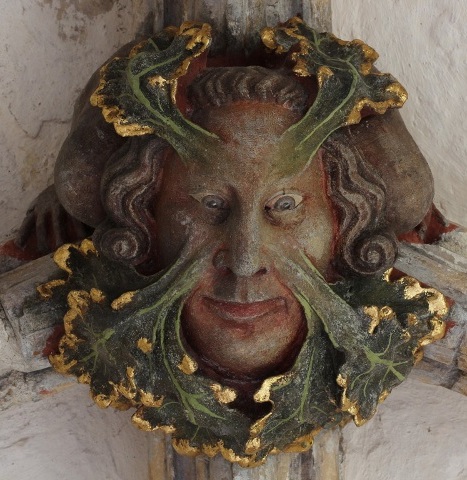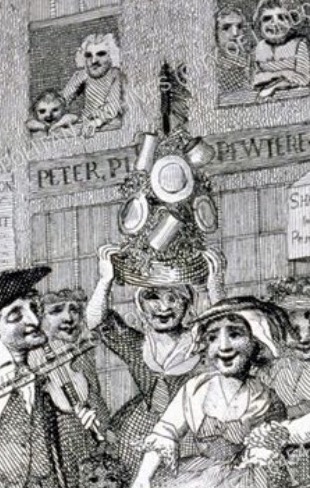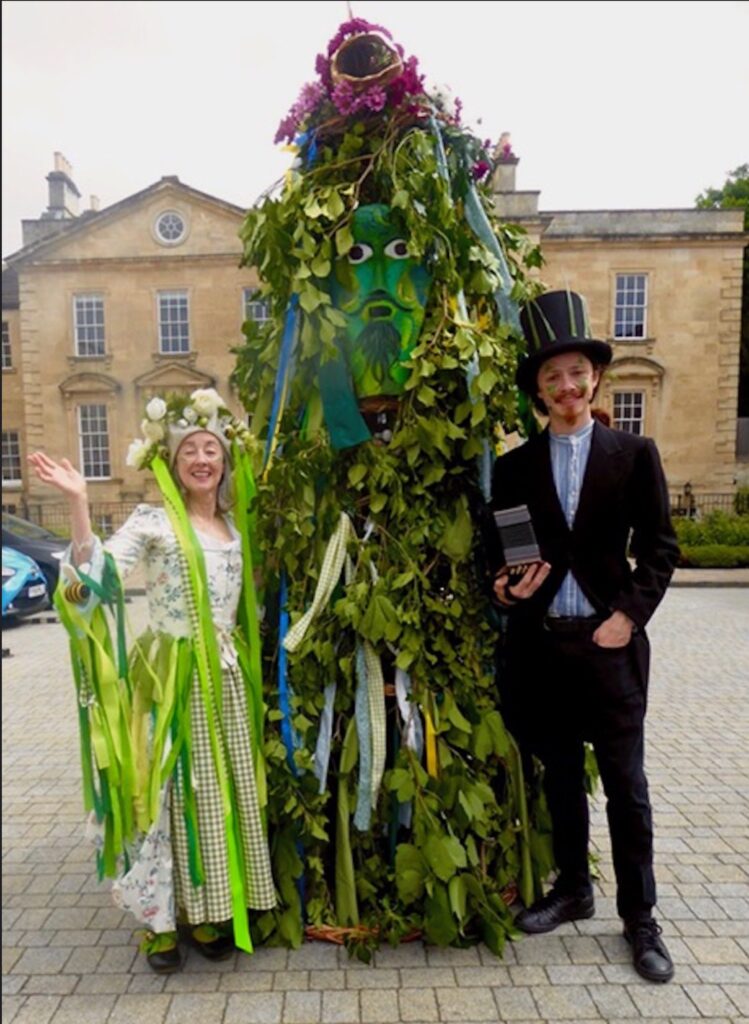If you are interested in helping create this year’s Jack or in building a beast to bring to the festival please email us.

The Green Man: Hundreds of churches across the UK and Europe have stone carvings of (mainly) men’s faces or masks surrounded by dense, intertwining leaves and often with foliage emerging from their mouths and eyes. They were originally called leaf masks or foliate heads but in March 1939, in an article in the ‘Folklore’ journal, Lady Raglan adopted Mr C Cave’s term “The Green Man” and the name took root. The oldest known carvings, in Trier, Germany, are Roman in origin and linked to the god Dionysus who died, his body was eaten by his followers and was then resurrected, which sounds rather familiar. The Trier carvings date from circa 200CE, one in Poitiers dates from 400CE and others in Istanbul are from the C6th, Seville has several dating from the C13th but most examples in the UK are medieval from the C11th to C14th when the stonemasons built the churches. There are three main styles of Green Man face and they appear all over Europe. One thing is clear they generally portray pained even demonic expressions and while Christianity acknowledges the devil one would expect images of him (her?) to be in churches low down, even underfoot, not raised up to the heavens. Clearly there must have been some standardising influence at work, even if we no longer know what it was. While stonemasons openly incorporated their personal mason’s marks on the stonework their fraternity had no tradition of foliate heads so they were not covertly incorporating their own secret symbols into churches. To establish itself in the UK Christianity adopted many pagan sites and celebrations and while many believe that Green Man faces were adopted by the church to incorporate a much older pagan tradition there is no hard evidence for that. However it seems too much of a co-incidence that so many masons across so many countries just happened to adopt Green Man carvings. Lady Raglan concluded “This figure I am convinced, is neither a figment of the imagination nor a symbol, but is taken from real life … I do not think anyone … can doubt that they’re portraits”. Whose real life we can probably never know. There are many Green Man carvings in Wiltshire including Lacock Abbey, Codford and Sutton Benger Church near Chippenham which has a set of famous green men carvings.

Jack In The Green is a quite separate and relatively modern folk custom which could have roots in all sorts of folk tales. Lady Raglan acknowledged the possibility of similarities between the Green Man, Jack in the Green, the King of May and even the original tradition of Robin Hood. Jack is believed to have evolved from a C17th May Day tradition in which milkmaids carried milk pails on their heads decorated with metal plate/mugs and garlands. By the latter half of the C18th the tradition had been taken over by chimney sweeps, the conical stack of pots and pans evolved into as walking bush (see below left) and their processions became very raucous affairs. Modern Jacks are made from a tall conical wicker framework decorated with green foliage and streamers, often crowned with a floral design. He is accompanied by musicians and other characters. Jack has now evolved into a herald of Summer who must be summoned from his Winter slumber and paraded around to announce the onset of Spring before being ritually torn apart to ensure a good Summer. All completely made up but still good fun.


In recent years there has been a big revival of Green Man and Jack In The Green celebrations although the two traditions have incorrectly been conflated. Most modern Jacks have an ornamental face mask replacing the original openings through which the face of the carrier inside was visible. We introduced our giant Jack in 2019 and his partner Jill in 2022. Her outfit reflects that of the original milkmaids and her son appears as a sweep so we are unique in the UK in having all three versions the Jack tradition included in our day as shown on the left
There are about 20 Jack in the Green festivals around the UK, more information here. The West of England also has a tradition of festival giants including the The Bristol Jack, the Highworth Jack, the Salisbury Giant and his beast the Hob Nob.